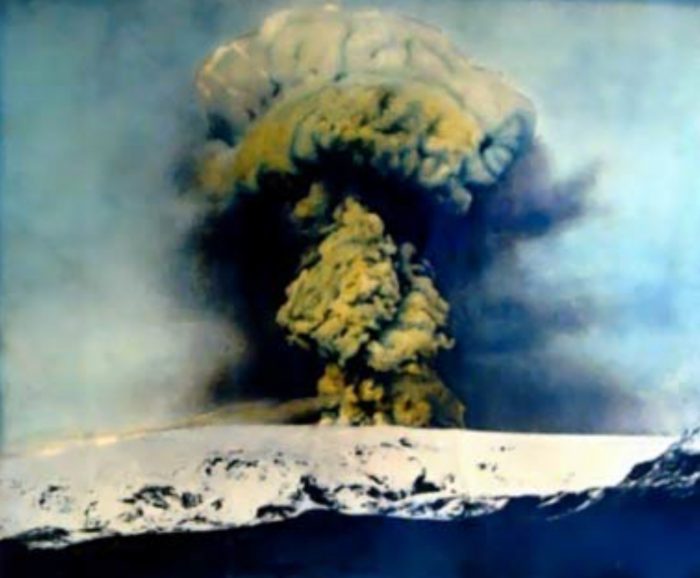The Icelandic Meteorology Office (IMO) has raised an alarm after one of the islands largest volcano had the biggest tremors surrounding it since 1977
Two tremors larger than 4 on the richter scale early Monday near the crater of Katla, the old giant theorized to be long overdue for an eruption.
The IMO issued a statement yesterday about the tremors that took place on Sunday night, starting at 1:47 and continuing into the night, Gunnar B. Gudmundson confirms to IceNews reporter. Approximately ten small tremors around the volcano followed the large ones.
There are theories about Katla last erupting on a minor scale in 1955, 1999 and 2011, indicated by the rivers Múlakvísl og Jökulsá á Sólheimasandi sudden eruptive discharge of water. Neither of those were large enough to break the icecap covering the 10 kilometer wide caldera and there was no visible sign of magma breaching the surface in any of the three. The last major eruption of Katla was in 1918 and lasted more than five weeks, causing major damage and havoc. Katla was very active in her time, twenty eruptions were documented between 930 and 1918, and she’s considered long overdue for a proper eruption.
The tremors on Sunday night are not as uncommon as one might think, and there is nothing so far to really indicate an eruption breaching the earths crust and no sign of magma movement according Gudmundson, although the IMO keeps an even closer eye on her surroundings and activities.
Katla is one of the largest volcanoes in Iceland, situated to the north of Vík í Mýrdal and to the east of the smaller glacier Eyjafjallajökull who’s underlying volcano famously erupted in 2011 bringing air traffic in Europe to a halt. Eyjafjallajokull has been known to erupt one to two years prior to Katla in the past. Katla’s peak reaches 1,512 metres and is partially covered by the Mýrdalsjökull glacier. The system of magma chambers has an area of 595 km2 (230 sq mi) and the Eldgjá canyon is part of the same volcanic system as Eyjafjallajökull.
A warning to Travelers!
A sudden discharge of glacial water is currently flowing into Múlakvísl river, south of Mýrdalsjökull glacier, which has in the past been read as a sign of Katla stirring under the icecap. The IMO warns of increased conductivity being measured in the river and gas measurements in the area show high concentrations of sulfur dioxide and hydrogen sulfide. People are advised not to travel near the river, due to gas pollution. It is not uncommon for glacial water to flow into Múlakvísl, causing increased conductivity and gas pollution according to the IMO website.
According to local reports, the level of the Bláfjallakvísl glacial river is unusually high. Bláfjallakvísl originates from the northern side of Mýrdalsjökull and people are advised to show caution when crossing the river.

